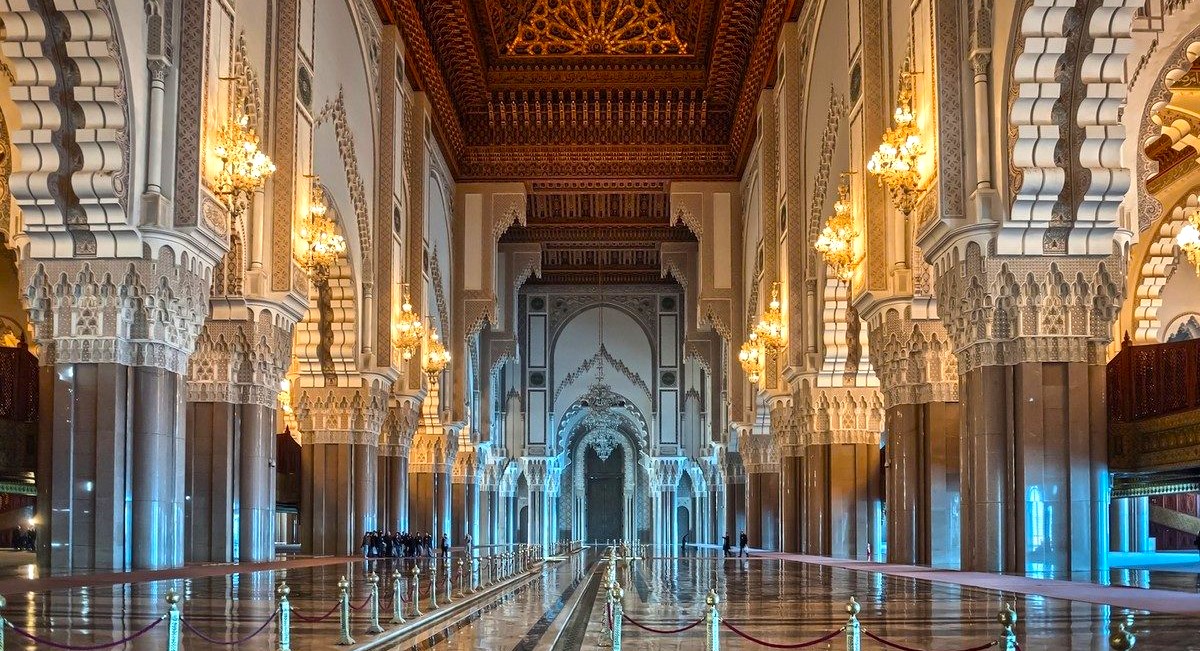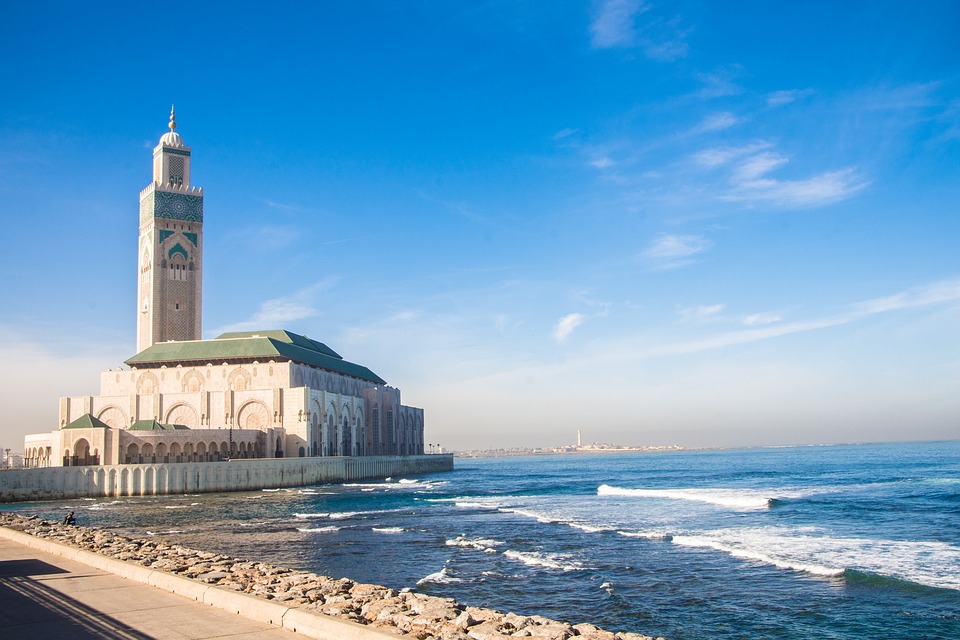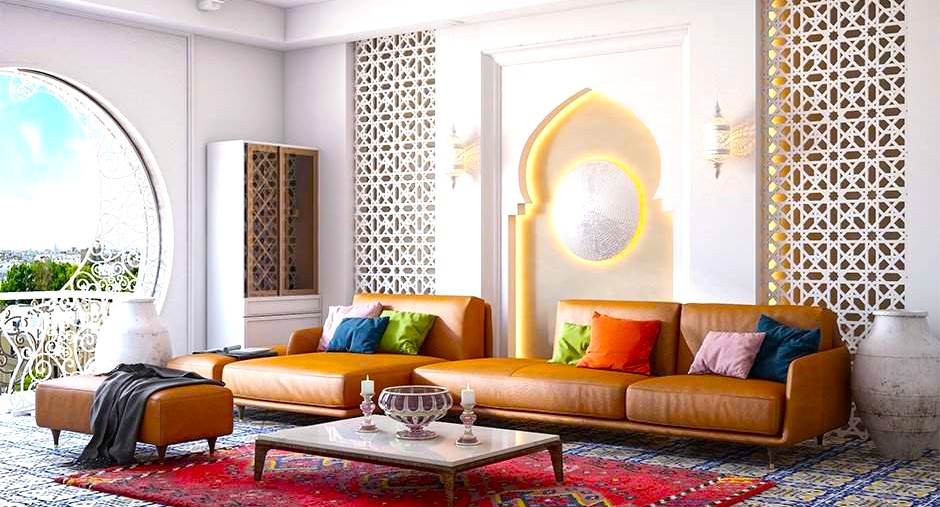Moroccan Architecture: Echoes of History and Art
Moroccan architecture is one of the most captivating expressions of the country’s heritage, artistry, and cultural fusion. From the ornate riads of Marrakech to the ancient kasbahs of the Atlas Mountains, Morocco’s buildings tell stories that span centuries, blending influences from Berber, Arab, Andalusian, and French colonial traditions.
This distinctive architectural style is celebrated for its harmony between beauty and function. Every courtyard, archway, and mosaic reflects Morocco’s spiritual depth and artistic mastery. The use of zellige tiles, stucco carvings, and carved cedar wood transforms simple spaces into living works of art.
Wandering through the medinas of Fes, Meknes, and Marrakech feels like stepping into a living museum, where every doorway and fountain whispers tales of dynasties, craftsmanship, and devotion. Beyond their aesthetic splendor, these architectural marvels embody community, privacy, and balance, values deeply woven into Moroccan culture.
Discover how Moroccan architecture continues to inspire travelers, historians, and artists from around the world, offering a journey through time, beauty, and cultural legacy.
Moroccan architecture: echoes of history and art
Moroccan architecture is one of the most captivating reflections of the country’s heritage, artistry, and cultural fusion. From the riads of Marrakech to the ancient kasbahs of the Atlas Mountains, Morocco’s architectural masterpieces tell stories that span centuries, shaped by Berber, Arab, Andalusian, and French colonial influences.
This unique style is admired for its harmony between form and function, where every courtyard, archway, and zellige tile serves both an aesthetic and symbolic purpose. The intricate zellige mosaic art, stucco carvings, and cedar woodwork found in mosques, palaces, and homes reveal Morocco’s devotion to beauty, craftsmanship, and spirituality.
Exploring the medinas of Fes and Marrakech feels like walking through a living museum, where each fountain, minaret, and arched gate echoes centuries of history and artistic excellence. These architectural wonders embody the essence of community, privacy, and harmony, values deeply rooted in Moroccan culture and daily life.
For travelers and art lovers alike, discovering Moroccan architecture is more than sightseeing; it’s an intimate journey through time, faith, and creative legacy, where the walls themselves tell stories of Morocco’s enduring soul.
The Historical Roots of Moroccan Architecture
The beauty of Moroccan architecture lies in its deep historical roots, where every dynasty and civilization has left an indelible mark on the country’s urban landscape. From the early Berber fortresses to the grandeur of Islamic palaces, Morocco’s built heritage tells a story of cultural blending and adaptation through the ages.
The Berbers, the indigenous people of North Africa, were the first to shape Morocco’s architectural foundation. Their designs emphasized practicality and protection, which can still be seen in the kasbahs of southern Morocco and the earthen villages of the Atlas Mountains. Made from local clay and straw, these structures blend seamlessly into their surroundings, symbolizing harmony with nature.
As Islam spread through North Africa, new artistic and spiritual influences arrived. The Arab dynasties, such as the Almoravids and Almohads, introduced monumental architecture, grand mosques, medersas (religious schools), and city walls that reflected both faith and power. The Koutoubia Mosque in Marrakech and the Hassan Tower in Rabat stand as remarkable examples of this period, combining geometric balance, decorative symmetry, and a profound sense of spirituality.
The arrival of the Andalusian refugees from Spain during the 15th century infused Moroccan cities with Moorish artistry, characterized by horseshoe arches, tile mosaics, and lush garden courtyards. The Al-Qarawiyyin Mosque and University in Fes perfectly embodies this blend, uniting Andalusian refinement with Moroccan ingenuity.
Over the centuries, French colonial architecture added a new layer of sophistication, particularly in Casablanca and Rabat, where Art Deco and modernist elements were incorporated into traditional Moroccan design. This coexistence of ancient and modern makes Morocco’s cities visually diverse and architecturally unique.
Today, the imperial cities of Morocco, Fes, Marrakech, Meknes, and Rabat stand as living testaments to this evolving architectural identity, each offering a distinct interpretation of Morocco’s long and storied past.
The Architectural Styles That Define Morocco
The architectural diversity of Morocco is one of its most captivating features, blending ancient traditions with external influences while preserving a distinctive national identity. Across the kingdom, each style reflects not only a specific era but also the cultural soul of the people who shaped it.
1. Islamic and Moorish Architecture
At the heart of Morocco’s design language lies Islamic and Moorish architecture, known for its intricate details, perfect symmetry, and spiritual symbolism. The Ben Youssef Madrasa in Marrakech is a masterpiece of this style, featuring delicate stucco carvings, arabesque motifs, and mesmerizing zellij tilework that create a visual rhythm of harmony and devotion. These elements are not mere decoration but an expression of the divine order that governs Islamic art.

2. Berber and Kasbah Architecture
In the Atlas Mountains and the desert regions, the Berber people developed a distinct architectural approach rooted in adapting to the environment. The iconic Ait Ben Haddou Kasbah, a UNESCO World Heritage Site, exemplifies this with its sun-dried mudbrick walls, simple geometric lines, and commanding towers. Such structures were designed to withstand extreme weather while providing protection and community unity.
If you’re intrigued by these fortresses, you can explore more through our Morocco Sahara Desert Tours, where many kasbahs still stand proudly against the golden dunes.

3. Andalusian Influence
After the Reconquista in Spain, many Muslim artisans and scholars migrated to Morocco, carrying the artistic essence of Andalusian design. This influence blossomed in cities like Fes, Tétouan, and Chefchaouen, where graceful arches, fountains, and courtyards flourished. The Royal Palace of Fes showcases magnificent bronze doors and intricate tile mosaics that reflect centuries of craftsmanship. The Andalusian touch remains one of the most romantic aspects of Moroccan architecture.

4. French Colonial and Modern Moroccan Style
During the early 20th century, Morocco experienced a wave of modernization under the French Protectorate, which left its mark on cities like Casablanca and Rabat. Wide boulevards, Art Deco buildings, and white facades introduced European elegance to Moroccan cities. The Hassan II Mosque in Casablanca is a perfect fusion of traditional craftsmanship and modern engineering — a symbol of Morocco’s ability to evolve without losing its roots.

5. Contemporary Moroccan Design
Today, Moroccan architecture continues to evolve through a fusion of old and new. Architects and artisans are reviving traditional techniques such as zellij, tadelakt plaster, and carved cedarwood while integrating sustainable materials and minimalist aesthetics. The result is a new wave of design that keeps Morocco’s architectural spirit alive, whether in modern riads, boutique hotels, or public buildings.

The Art of Decoration in Moroccan Architecture
Decoration in Moroccan architecture is not merely about beauty; it’s a visual language that reflects centuries of artistry and spirituality. From the geometric elegance of zellij tilework to the soft texture of tadelakt plaster and the fine carvings in cedarwood and stucco, every detail has meaning.
These intricate patterns and materials transform ordinary walls and courtyards into timeless masterpieces, blending form and faith in perfect harmony. The craftsmanship seen in landmarks like the Bou Inania Madrasa in Fes and the Ben Youssef Madrasa in Marrakech continues to inspire both locals and visitors today.
If you’re fascinated by this aspect of Moroccan artistry, you can explore it further in our upcoming article dedicated entirely to The Art of Decoration in Moroccan Architecture, where we’ll dive deeper into the techniques, materials, and symbolism behind these breathtaking designs.
Are you ready to experience Morocco’s architectural wonders firsthand?
From the majestic Hassan Tower in Rabat to the intricate riads and palaces of Marrakech and Fes, let Holiday Morocco Tours craft your personalized journey through Morocco’s history, artistry, and cultural heritage. Discover, explore, and be inspired by the timeless beauty of Moroccan architecture on a tour designed just for you.
The Symbolism and Spiritual Meaning Behind Moroccan Architecture
Every curve, pattern, and material in Moroccan architecture carries a profound symbolism rooted in faith, philosophy, and harmony with nature. Unlike purely decorative styles found elsewhere, Moroccan design speaks to the spiritual essence of Islam, where geometry and proportion express the divine order of the universe.
The use of geometric patterns, so prominent in zellij tilework and stucco carvings, represents infinity, the idea that God is eternal and beyond human imagination. Circles symbolize unity, stars evoke divine light, and interlocking shapes remind us of the interconnectedness of all creation. In sacred spaces like the Koutoubia Mosque in Marrakech and the Hassan Tower in Rabat, these designs are not only visual delights but spiritual meditations crafted in stone and color.
Water, another recurring element in Moroccan architecture, holds deep religious and cultural meaning. Flowing fountains in courtyards and Andalusian gardens reflect purity, tranquility, and life — echoing the Quranic description of paradise as a garden beneath which rivers flow.
Even the layout of traditional Moroccan riads follows this spiritual philosophy. The inward-facing design symbolizes privacy, family unity, and the balance between the inner self and the outer world. The open courtyard at the center represents the heart, calm, pure, and open to divine light.
This fusion of art, faith, and philosophy gives Moroccan architecture its timeless power. Whether in the grand mosques of Fes, the majestic kasbahs of the south, or the tranquil riads of Marrakech, every space invites reflection, serenity, and connection to something greater.
Discover Morocco’s Iconic Architectural Landmarks
The richness of Moroccan architecture is best experienced through its most iconic landmarks. From the towering Hassan Tower in Rabat to the intricately decorated Ben Youssef Madrasa in Marrakech, each site tells a story of artistry, history, and cultural heritage.
For travelers eager to explore Morocco’s architectural treasures, these landmarks are gateways into the country’s spiritual and artistic identity. Whether wandering through the courtyards of ancient riads, exploring the fortified kasbahs of the south, or admiring the detailed zellij mosaics of imperial cities, every corner reflects centuries of craftsmanship and vision.
To dive deeper and experience the most famous architectural wonders in Morocco, check out our dedicated article: Famous Architectural Landmarks in Morocco. There, you’ll discover detailed stories, historical context, and tips for visiting these must-see sites.
